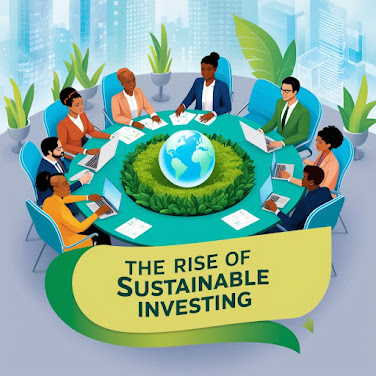The Rise of Sustainable Investing: How to Align Your Portfolio with Your Values
Introduction
In recent years, sustainable investing has gained significant traction among investors who want to make a positive impact on society and the environment. This approach goes beyond traditional financial metrics, incorporating environmental, social, and governance (ESG) factors into investment decisions. As awareness of climate change and social issues increases, many investors are looking for ways to align their portfolios with their values. This article explores the rise of sustainable investing and provides practical steps on how to integrate these principles into your investment strategy.
What is Sustainable Investing?
Sustainable investing, often referred to as socially responsible investing (SRI), focuses on creating a positive impact while achieving financial returns. It involves selecting investments based on ESG criteria, which evaluate how a company performs in relation to environmental protection, social responsibility, and corporate governance.
Key Components of Sustainable Investing
Environmental Factors: These include a company's efforts to reduce carbon emissions, manage waste, and promote renewable energy. Investors consider how businesses impact the planet and whether they are actively working to improve their environmental footprint.
Social Factors: This aspect examines how companies manage relationships with employees, suppliers, customers, and communities. Issues such as labor practices, diversity, and community engagement play a crucial role in assessing a company’s social responsibility.
Governance Factors: Governance refers to the leadership and management practices of a company. Investors look for transparency, ethical business practices, and board diversity when evaluating governance factors.
The Growth of Sustainable Investing
Sustainable investing has experienced exponential growth in recent years. According to the Global Sustainable Investment Alliance, sustainable investments reached $35.3 trillion in 2020, a significant increase from previous years. This trend is driven by various factors:
Increased Awareness: Investors are becoming more aware of global issues such as climate change, social inequality, and corporate ethics. Many seek to support companies that align with their values.
Millennial Influence: Younger generations prioritize sustainability and social responsibility. As they enter the workforce and accumulate wealth, their investment preferences are shaping the market.
Regulatory Changes: Governments and regulatory bodies are increasingly pushing for transparency in ESG reporting, encouraging companies to adopt sustainable practices.
Performance Potential: Studies show that companies with strong ESG practices may outperform their peers in the long run, making sustainable investments not just ethical but potentially lucrative.
How to Align Your Portfolio with Your Values
If you're interested in sustainable investing, here are some practical steps to help you align your portfolio with your values:
1. Define Your Values
Start by identifying what matters most to you. Consider the environmental and social issues you are passionate about, such as climate change, gender equality, or community development. This will guide your investment choices.
2. Research ESG Funds
Many investment funds and ETFs focus on sustainable companies. Look for funds that screen for ESG criteria, and review their performance history. Some popular ESG fund families include BlackRock’s iShares Sustainable ETFs and Vanguard’s ESG funds.
3. Consider Individual Stocks
If you prefer to pick individual stocks, research companies that prioritize sustainability. Look for those with strong ESG ratings, a commitment to reducing their carbon footprint, and transparent governance practices.
4. Engage with Your Investments
Stay informed about the companies in your portfolio. Engage with their sustainability reports, attend shareholder meetings, and consider advocating for responsible practices. As a shareholder, your voice can help influence positive change.
5. Diversify Your Portfolio
Just like traditional investing, diversification is essential in sustainable investing. Spread your investments across different sectors and asset classes to mitigate risk while maintaining your commitment to sustainability.
6. Monitor Your Impact
Regularly review your portfolio to ensure it aligns with your values. Many platforms provide tools to track the impact of your investments on social and environmental issues, helping you make informed decisions.
Challenges of Sustainable Investing
While sustainable investing offers numerous benefits, it’s not without challenges. One common concern is "greenwashing," where companies exaggerate their sustainability efforts to attract investors. It’s crucial to conduct thorough research and rely on credible ESG ratings.
Additionally, some investors worry that sustainable investments may yield lower returns compared to traditional investments. However, evidence suggests that many sustainable funds perform competitively, if not better, over time.
Conclusion
The rise of sustainable investing reflects a growing desire among investors to align their financial decisions with their values. By incorporating ESG factors into your investment strategy, you can contribute to a more sustainable future while pursuing financial returns. As the landscape of investing continues to evolve, sustainable investing offers a meaningful way to make a positive impact on the world. Start today, and take the first steps toward building a portfolio that reflects your values.
Feel free to ask if you'd like to expand on any specific section or need additional information!

